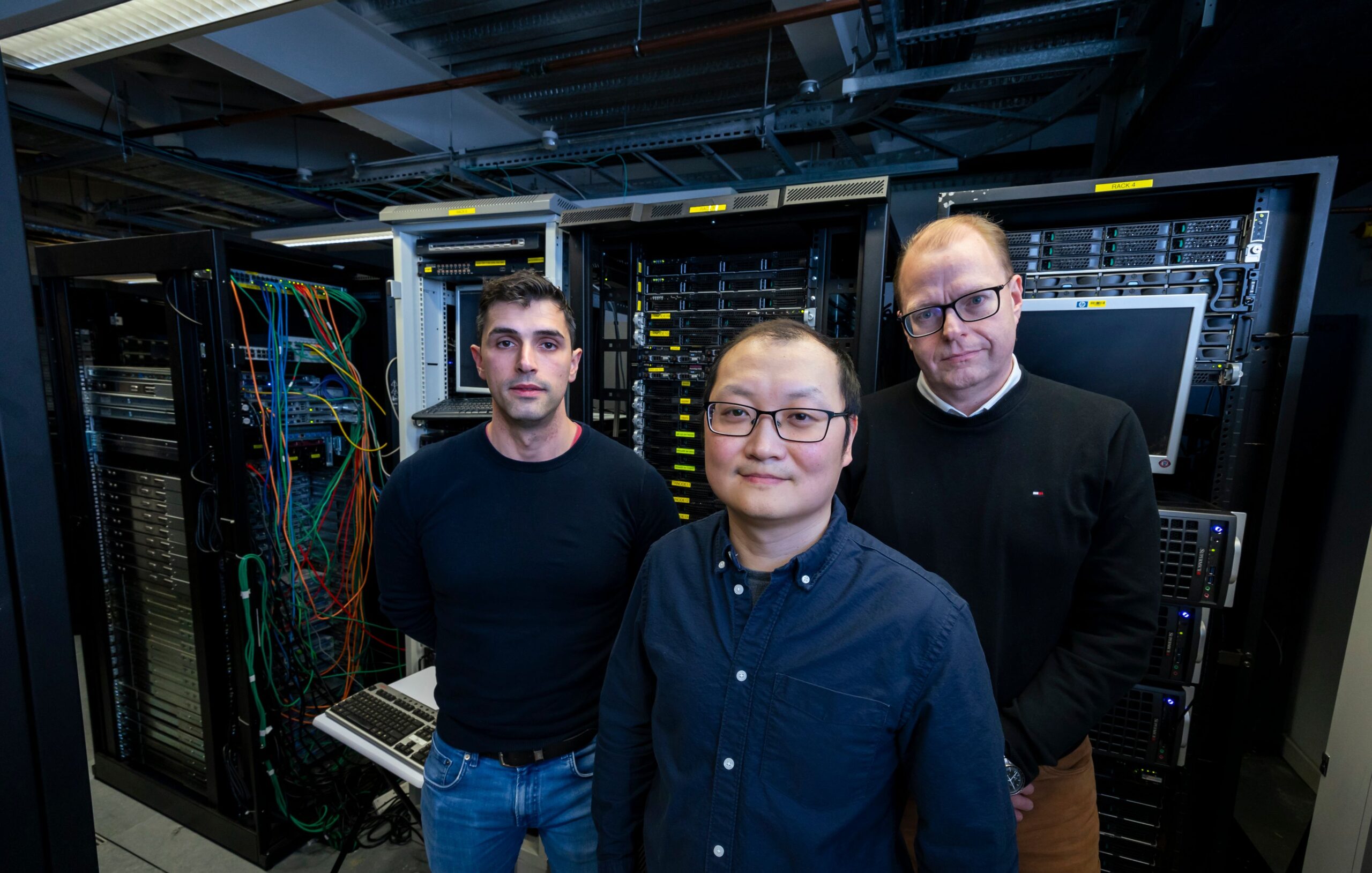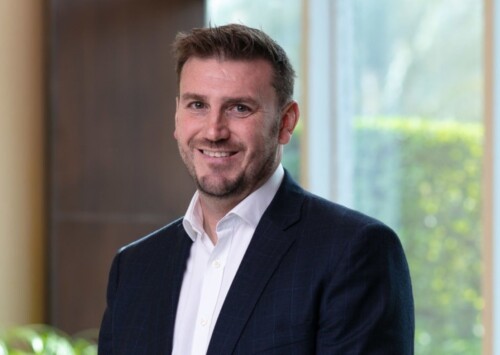Scientists from Glasgow University & NYU develop AI tool for cancer detection & treatment

Dr Ke Yuan , Professor John Le Quesne and Dr Adalberto Claudio Quiros stand in front of a projection of one of the cancer sample sli des used to train the machine learning algorithm used in the study
A computer system, developed by researchers from Glasgow University and New York University, utilises Artificial Intelligence to decode the language of cancer, effectively identifying disease indicators in biological samples with remarkable precision. This breakthrough development not only aids in diagnosis but also provides dependable predictions of patient outcomes.
In a press statement, Glasgow University says that an international team of AI specialists and cancer scientists are behind the breakthrough development, which can also provide reliable predictions of patient outcomes.
It adds that the new system, which researchers call ‘Histomorphological Phenotype Learning’ (HPL), could aid human pathologists to provide faster, more accurate diagnoses of the disease, potentially helping to improve cancer care in the future.
The statement adds that they started by collecting thousands of high-resolution images of lung adenocarcinoma tissue samples from 452 patients stored in the United States National Cancer Institute’s Cancer Genome Atlas database and this data included additional information on the progression of patients’ cancers. They then developed an algorithm utilising a training process called self-supervised deep learning to analyse the images and identify patterns solely based on visual data from each slide.
Glasgow University says that the algorithm disassembled the slide images into thousands of tiny tiles, each depicting a small portion of human tissue.
It adds that the team integrated analysis of slides from squamous cell lung cancer into the HPL system, distinguishing between their features with 99 pc accuracy and after identifying patterns in the samples, researchers utilised the algorithm to analyse correlations between classified phenotypes and clinical outcomes, such as post-surgery survival rates.
The statement adds that the algorithm identified specific phenotypes, such as less invasive tumour cells or heightened inflammatory response, which were more prevalent in patients experiencing longer post-treatment survival.

Dr Adalberto Claudio Quiros , Dr Ke Yuan and Professor John Le Quesne stand in a data centre at the University of Glasgow ’ s School of Computing Science
It adds that HPL system’s predictions closely aligned with real-life outcomes, accurately assessing cancer recurrence likelihood and timing 72 pc of the time, compared to 64 pc accuracy by human pathologists performing the same predictions.
“We didn’t provide the algorithm with any insight into what the samples were or what we expected it to find. Nonetheless, it learned to spot recurring visual elements in the tiles which correspond to textures, cell properties and tissue architectures called phenotypes.By comparing those visual elements across the whole series of images it examined, it recognised phenotypes which often appeared together, independently picking out the architectural patterns that human pathologists had already identified in the samples,” says Dr Ke Yuan, of the University of Glasgow’s School of Computing Science, who supervised the research and is the paper’s senior author.
“We were surprised but very pleased by the effectiveness of machine learning to tackle this task. It takes many years to train human pathologists to identify the cancer subtypes they examine under the microscope and draw conclusions about the most likely outcomes for patients. It is a difficult, time-consuming job, and even highly-trained experts can sometimes draw different conclusions from the same slide. In a sense, the algorithm at the heart of the HPL system taught itself from first principles to speak the language of cancer to recognise the extremely complex patterns in the slides and ‘read’ what they can tell us about both the type of cancer and its potential effect on patients,” says Professor John Le Quesne, co-senior author of the paper and who supervised the research at the University of Glasgow’s School of Cancer Sciences.
“In a sense, the algorithm at the heart of the HPL system taught itself from first principles to speak the language of cancer, to recognise the extremely complex patterns in the slides and ‘read’ what they can tell us about both the type of cancer and its potential effect on patients’ long-term health. Unlike a human pathologist, it does not understand what it’s looking at, but it can still draw strikingly accurate conclusions based on mathematical analysis,” he adds.
“It could prove to be an invaluable tool to aid pathologists in the future, augmenting their existing skills with an entirely unbiased second opinion. The insight provided by human expertise and AI analysis working together could provide faster, more accurate cancer diagnoses and evaluations of patients’ likely outcomes. That, in turn, could help improve monitoring and better-tailored care across each patients’ treatment,” Quesne adds.
“This research shows the potential that cutting-edge machine learning has to create advances in cancer science which could have significant benefits for patient care. This kind of self-learning algorithm will only become more accurate as additional data is added, helping it become more fluent in the language of cancer. Unlike humans, it brings no pre-conceived ideas to its work, so it may even find patterns across the datasets that have not been fully explored before,” says Dr Adalberto Claudio Quiros, co-first author of the paper & a research associate in the University of Glasgow’s School of Cancer Sciences and School of Computing Science.
“Ultimately, our aim is to provide doctors and patients with a tool that can help provide them with an improved understanding of their prognosis and treatment,” he adds.
Dr Aristotelis Tsirigos and Dr Nicolas Coudray, of New York University’s Grossman School of Medicine and Perlmutter Cancer Centre, are co-senior investigator and co-first author on the paper, respectively. Researchers from New York University, University College London and the Karolinska Institute also contributed to the paper.









